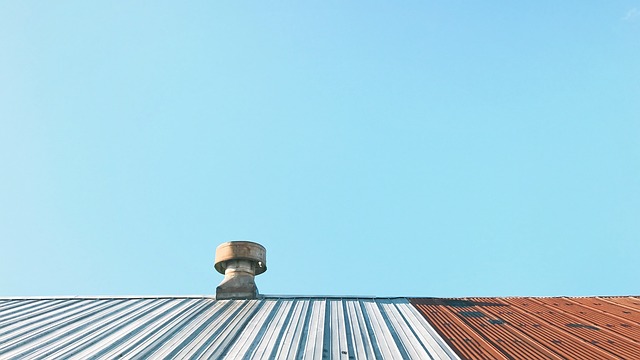A Complete Guide to Corrugated Plastic Roofing Sheets
Corrugated plastic roofing sheets, particularly those made from polycarbonate, have become increasingly popular alternatives to traditional roofing materials. These versatile building materials offer a combination of durability, light transmission, and weather resistance that makes them suitable for various applications, from greenhouse coverings to carports and patio roofs. However, with numerous options available on the market, choosing the right corrugated plastic roofing sheet requires understanding their properties, benefits, and limitations. This guide explores what you should consider when selecting these materials and how they compare to alternatives.

What Should You Look for When Choosing Corrugated Plastic Roofing Sheets
When selecting corrugated plastic roofing sheets, material composition should be your primary consideration. Polycarbonate sheets offer superior impact resistance—up to 200 times stronger than glass—making them ideal for areas prone to hail or falling debris. Look for UV protection layers, which prevent yellowing and brittleness over time. Most quality sheets feature co-extruded UV protection rather than coatings that can wear off.
Thickness is another crucial factor, typically ranging from 0.8mm to 3mm for corrugated sheets. Thicker sheets provide better insulation and durability but cost more and transmit less light. The profile (wave pattern) affects both aesthetics and compatibility with existing structures—ensure your selected profile matches any connecting materials. Finally, check the sheet’s light transmission properties, which can range from clear (90% light transmission) to completely opaque, depending on your specific requirements.
How Do Corrugated Plastic Sheets Typically Compare to Other Roofing Materials
Corrugated plastic roofing offers distinct advantages over traditional materials like metal, asphalt, or clay. Unlike metal roofing, polycarbonate sheets don’t conduct heat as readily and operate much more quietly during rainfall. They’re also significantly lighter—typically 1/6 the weight of glass and 1/3 the weight of metal sheets—reducing structural requirements and installation complexity.
In terms of longevity, quality polycarbonate sheets last 10-15 years with proper installation, which is less than metal (40-70 years) but comparable to asphalt shingles. However, they offer superior light transmission capabilities that opaque materials cannot match. For energy efficiency, corrugated plastic sheets with infrared-blocking properties can reduce cooling costs by blocking heat while allowing visible light to pass through—a distinct advantage over solid roofing materials in spaces where natural lighting is desired.
When Might Corrugated Plastic Roofing Be a Practical Option
Corrugated plastic roofing excels in applications requiring abundant natural light while maintaining protection from elements. Greenhouses represent the most common application, as the sheets provide optimal growing conditions by allowing customized light filtration while protecting plants from adverse weather. Patios, pergolas, and outdoor living spaces benefit from these materials when homeowners want coverage that doesn’t create a dark, enclosed feeling.
Utilitarian structures like carports, storage sheds, and animal shelters also benefit from corrugated plastic roofing due to its balance of durability and affordability. In industrial settings, these materials often serve as economical skylights in large metal buildings, providing natural illumination that reduces energy costs. DIY enthusiasts particularly favor these sheets because they’re lightweight, easy to cut with standard tools, and require minimal specialized hardware for installation—making them accessible for weekend projects without professional help.
What Factors Often Influence the Quality of Corrugated Plastic Roofing Sheets
Manufacturing processes significantly impact the quality of corrugated plastic sheets. High-quality polycarbonate sheets undergo controlled cooling during extrusion, resulting in uniform thickness and reduced internal stress—factors that directly affect longevity and performance. The quality of raw materials matters too; virgin polycarbonate resins provide better clarity and strength than recycled materials, though the latter offer environmental benefits.
Additives play a crucial role in sheet performance. UV stabilizers prevent degradation from sun exposure, while impact modifiers enhance durability against hail and debris. Some premium sheets incorporate infrared-blocking technology that allows visible light to pass while reflecting heat radiation, improving energy efficiency. The precision of the corrugation process also affects quality; inconsistent wave patterns can create installation difficulties and compromise weather sealing.
Cost and Provider Comparison for Polycarbonate Roofing Sheets
When planning your project, understanding the cost variations between different types of polycarbonate sheets and providers is essential for making informed decisions that balance quality with budget constraints.
| Product Type | Provider | Thickness | Cost Estimation (per sq. ft.) |
|---|---|---|---|
| Standard Clear Corrugated | Tuftex | 0.8mm | $1.80-$2.50 |
| Premium Clear Corrugated | Suntuf | 1.1mm | $2.60-$3.40 |
| Tinted Corrugated | Palram | 0.8mm | $2.00-$2.80 |
| Multi-wall Polycarbonate | Polygal | 8mm | $3.50-$4.70 |
| High-Impact Corrugated | LEXAN | 1.5mm | $3.80-$5.00 |
Prices, rates, or cost estimates mentioned in this article are based on the latest available information but may change over time. Independent research is advised before making financial decisions.
Installation costs typically add $2-$5 per square foot depending on complexity and local labor rates. Additionally, necessary accessories like fasteners, closure strips, and flashing can add 15-20% to material costs but are essential for proper installation and longevity.
Conclusion
Selecting the appropriate corrugated plastic roofing sheets requires balancing multiple factors including material quality, thickness, UV protection, and intended application. While these sheets may not match the decades-long lifespan of metal roofing, their combination of light transmission, weight advantages, and relatively straightforward installation makes them ideal for many applications. By understanding the specific requirements of your project and evaluating the quality indicators discussed here, you can make an informed decision that provides the optimal balance of performance, aesthetics, and value for your specific roofing needs.




